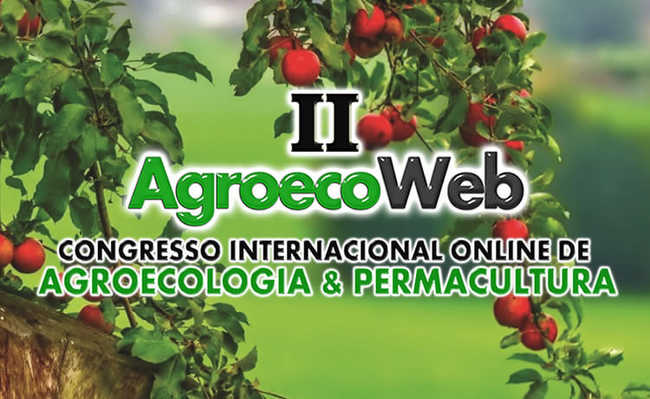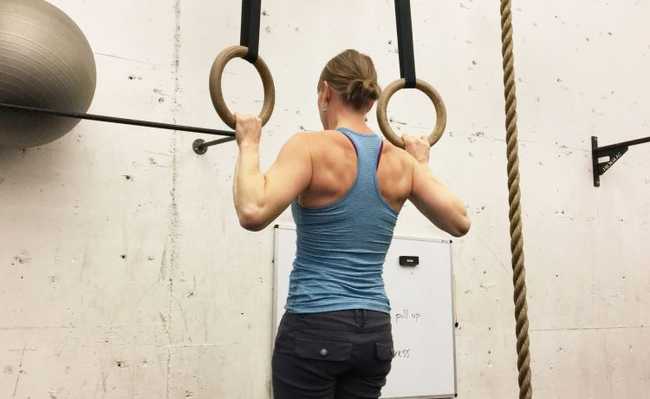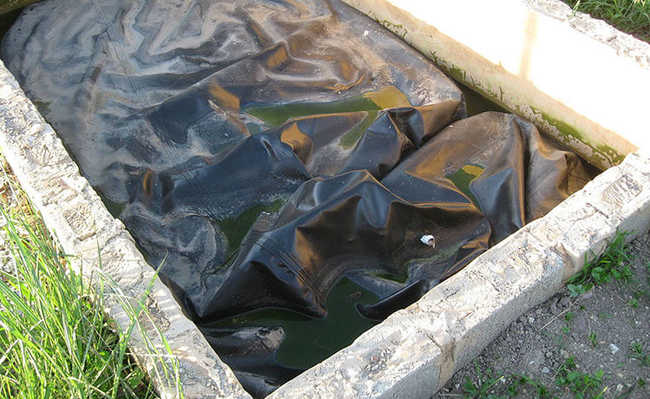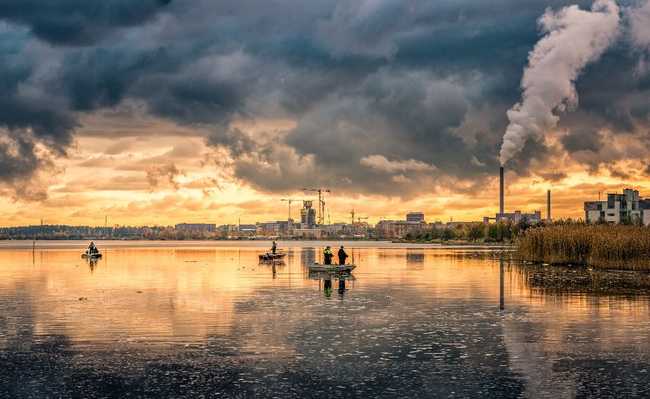Ghost fishing: the invisible danger of fishing nets
Without profiting or feeding anyone, ghost fishing affects around 69,000 marine animals a day in Brazil alone

Ghost fishing , called ghost fishing in English, this is what happens when equipment developed to capture marine animals, such as fishing nets, lines, hooks, trawls, pots, pots and other traps, are abandoned, discarded or forgotten in the sea.
These objects put all marine life at risk, since, once trapped in this type of contraption, the animal ends up injured, mutilated and killed in a slow and painful way. Ghost fishing threatens whales, seals, turtles, dolphins, fish and crustaceans that end up dying from drowning, suffocation, strangulation and laceration infections.
Every year, around 640 thousand tons of traps for marine animals are dropped into the oceans, which, in Brazil alone, can kill thousands of animals a day.
Ghost fishing does not move the economy, affects fish stocks that are often depleted and still remains as a live bait - it attracts fish and other larger animals to the trap, which arrive in search of smaller prey that have become tangled up in the tangle of wires.
The aggravating factor is that these fishing nets are often made of plastic, a material that can take hundreds of years to decompose.
It is estimated that in Brazil alone, ghost fishing affects around 69,000 marine animals per day, which are usually whales, sea turtles, porpoises (the most endangered dolphin species in the South Atlantic), sharks, rays, groupers, penguins, crabs , lobsters and shorebirds.
The scenario is catastrophic. According to the report of the World Animal Protection, ghost fishing has already affected 45% of marine mammals on the Red List of Threatened Species. Shallow coral reefs, which are already endangered ecosystems, also suffer degradation due to ghost fishing. It is estimated that 10% of the plastic present in the sea comes from ghost fishing.
In 2019, the World Animal Protection NGO launched the second edition of the report ghost under the waves. The study showed that every year 800 thousand tons of fishing equipment or fragments of fishing equipment are lost or discarded in the oceans across the planet. This amount represents 10% of all plastic that enters the ocean.
The study also assesses the performance of large fish companies and the measures they take – or do not take – to prevent unnecessary fish deaths. The international version of the report listed 25 fish companies in five levels, with level 1 representing the application of best practices and level 5 representing companies not engaged in solving the problem.
Brazil
None of the 25 companies reached tier 1, although three large companies in the world market (Thai Union, TriMarine, Bolton Group) entered tier 2 for the first time. The study includes two companies operating in Brazil, Grupo Calvo, producer of the Gomes da Costa brand, and Camil, producer of the brands O Pescador and Coqueiro.
Grupo Calvo was classified at level 4. This means that, despite the theme being included in the company's actions, evidence of implementation is limited. Camil, on the other hand, was placed at level 5. According to a report, the company “does not foresee solutions for the problem in its business agenda”.
When contacted, Grupo Calvo, whose headquarters are Spanish, stated that Gomes da Costa products are made from material purchased from local fishermen, who use artisanal fishing methods. The company also said that it recognizes the problem of abandoning objects and has taken steps to address it.
When contacted, Camil informed that it would not comment on the results of the research and on ghost fishing.
According to the manager of the World Animal Protection, one of the main goals of the study is to make governments increasingly see ghost fishing as a relevant problem and in need of efficient public policies.
microplastic generation

Edited and resized image by Andrei Ciobanu is available on Unsplash
Ghost fishing is another microplastic generator in the ocean. If plastic in normal form is already harmful, in micro form (which is the fate of most of them), it is treacherous. Despite being practically invisible, being very small, microplastic has the property of entering the food chain (learn more about this topic in the article: "Understand the environmental impact of plastic waste on the food chain").
Ingesting contaminated microplastics is not very difficult since, since the end of World War II, they have already been contaminating the environment.
Whoever eats seafood regularly eats around 11,000 pieces of microplastics a year. But it is not only in seafood that it is found. There are microplastics in salt, air and water.
As this material can last hundreds of years at sea, the threat extends over the long term.
And to top it off, microplastic is harmful by itself, it also has the property of absorbing harmful substances from the environment, such as persistent organic pollutants (POPs). Among these pollutants are PCBs, organochlorine pesticides, DDE and nonylphenol.
POPs are toxic and are directly linked to hormonal, immunological, neurological and reproductive disorders. They stay in the environment for a long time and, once ingested, have the ability to attach themselves to body fat, blood and bodily fluids of animals and humans.
It is estimated that in 2017 alone, children ingested over 750,000 plastic microparticles.
International data
About 25 thousand lost or discarded nets are registered annually in the Northeast Atlantic region.
In the Puget Sound estuary in the United States, 5,000 fishing nets removed from the sea were trapping more than 3.5 million marine animals a year, of which 1,300 were mammals, 25,000 birds and 100,000 fish.
Over the next 60 years, the number of abandoned fishing traps could reach 11 million in the Florida Keys islands in Miami, United States alone.
illegal fishing
Illegal fishing is a factor that aggravates ghost fishing. As it is an illegal and very profitable activity, the catchers "hide" the equipment, leaving them in the sea so as not to be detected. It is estimated that one in five fish comes from criminal activity.
Is it the end of marine animals?
Ghost fishing promotes unsustainable fishing resources and marine habitats. There is a great risk that the oceans will stop providing human beings with everything they now provide.
Ghost Fishing Solutions
In addition to actions by volunteers who remove fishing equipment from the sea on their own, agents in the fishing production chain must take responsibility for ghost fishing.
The campaign of World Animal Protection is an initiative that tackles the problem of ghost fishing by removing fishing traps from the oceans and recycling materials. However, more effective actions are needed in order to avoid the abandonment of these materials at sea.
In addition to calling for public policies to combat this type of practice, it is necessary to reflect on consumption itself. Have you ever stopped to think that if there was no demand for marine animals, illegal fishing, which gives rise to ghost fishing, would not be profitable at all?
How about zeroing out, or at least significantly reducing the consumption of marine animals? Worldwide, 70% of the population is dropping or reducing meat consumption. Vegetarianism, or veganism, seem to be ideologies increasingly adopted by consumers aware of the impact of their diets on the world. If everyone were vegan, eight million people's deaths annually would be prevented.
- Vegan philosophy: know and ask your questions
In addition, vegetarianism contributes more to reducing greenhouse gases than giving up driving. Other benefits include a huge reduction in the levels of pesticides and other ingested toxins. You must be thinking: "but also pesticides are used on plants, what's the difference?". In fact, those who consume animal products end up ingesting more pesticides than vegetarians, as these toxics are fat-soluble. When applied to soybean plantations, for example, when entering the body of cattle fed with feed made from this vegetable, they end up bioaccumulating in animal fat.
Therefore, when consuming soybeans directly, less pesticides are ingested than when consuming a steak, which has these substances in bioaccumulated quantities.
In the case of marine animals, unhealthy conditions are due to the presence of microplastics in the food chain. As mentioned before, microplastics have a high potential for absorbing toxic substances such as PCBs. Once in the organisms of marine animals, they bioaccumulate and end up in the human body. It's already been proven, the human intestine also has microplastics. Learn more about this topic in the article: "It is confirmed: the human intestine also has microplastics".
Did you find this topic important and want to move on? Remember to share this article!
Check out more ghost fishing images in the video below:










